I’m not going to bury the lede; the East Sooke Coast Trail is the best hiking trail near Victoria. This 15 kilometer point-to-point hike is just the coastal section of a complex web of trails that cross East Sooke Regional Park. Most hikers utilize the criss-cross of trails to hike just a short section of the Coast Trail and loop back, but there are a million different options for routes through the park. If it’s possible to arrange pick-up and drop-off at either end of the trail, hiking the entirety of the Coast Trail from end to end is well worth it.
For this reason, navigation skills and hiking experience are required to hike the entirety of the East Sooke Coast Trail, though as mentioned hiking a smaller section is very doable. Unlike most other hikes featured on this website, I don’t intend this guide to be the definitive resource on navigation on this hike – there are too many branches in the trail and too many twists and turns for me to able to definitively cover everything. You’re going to need the skill and ability to figure some stuff out on your own, and if that doesn’t sound like you then you may not be ready for this hike.
The hike along the coastline of East Sooke Regional Park is extraordinary. Despite its proximity to Victoria this trail really conveys a feeling of wildness and solitude, much like many of Vancouver Island’s more well known coastal trails (like the Wild Pacific Trail.) There are a million notable viewpoints along the way, including of ancient petroglyphs, a number of peaceful little pocket beaches, and an old trap shack halfway along the hike. While the first 4 km (and to a lesser extent the last 4) are fairly popular during the day, the entire middle section of the Coast Trail sees way less traffic. Expect almost no litter on the trail, a somewhat grown-over trail that isn’t always super easy to follow, and a sense of being all alone in the middle of nowhere.
Continue reading this blog post for everything you need to know to experience the East Sooke Coast Trail for yourself, including distance, elevation gain, how to get there, the best time to visit, and lots of photos of my experience.

When hiking it’s important to avoid harmful practices such as disturbing plants or rock-stacking, or removing any natural object from flowers to rocks, as it’s important to leave the environment as natural as possible for the animals and for fellow hikers to enjoy in perpetuity. As many flowers as there are, there are few enough that if we all took one, then there wouldn’t be any left. Take only photos, leave only footprints.
If you haven’t heard of Leave No Trace principles, they’re also really essential to read up on before heading anywhere into the outdoors in general. Following these important principles basically means doing your best to leave beautiful places like the Sooke Coast Trail as good (if not better) than you found them, both for their preservation and for the enjoyment of other visitors.

East Sooke Coast Trail Point-to-Point Trip Details
Distance: 15.5 KM / 9.6 MI
Elevation Gain: 404 M / 1325 FT
Hiking Time: 5-7 Hrs

Hiking & Safety Tips
Prepare for the possibility of wildlife encounters. There are almost no grizzly bears on Vancouver Island, but black bears are still common. Bear bells are proven to be an ineffective bear deterrent, and are even actively discouraged by Parks Canada. The best way to let bears know you’re around is simply to use your voice. Make sure to keep a respectful distance from wildlife and never feed the animals. It may seem kind but it doesn’t just kill wildlife and put people in danger, it’s also in many cases illegal.
More tips for hiking in bear country.
Research current trail conditions and make sure you are well-informed about the route before you leave, and assess if it is within your capability. Be aware of what time it gets dark and check the weather forecast. Make sure to tell someone where you’re going and when you expect to return. Every year as more and more people try hiking for the first time, the number of rescues goes up. Being prepared is the best defense.
More information on staying safe in the outdoors.
Pack everything you need for a successful hike, including enough water and energy-rich snacks. Remember to pack out everything you pack in though – don’t expect to find a convenient garbage can halfway up the trail. Bring appropriate layers (remember you’ll warm up once you start hiking) and sun protection. Hiking poles may be helpful but are not required. In addition to not leaving any garbage on the trail yourself, I highly recommend bringing a garbage bag and collecting any trash that you do see on the trail. You’re guaranteed to make the hike along the East Sooke Coast Trail a more enjoyable experience for the next person.
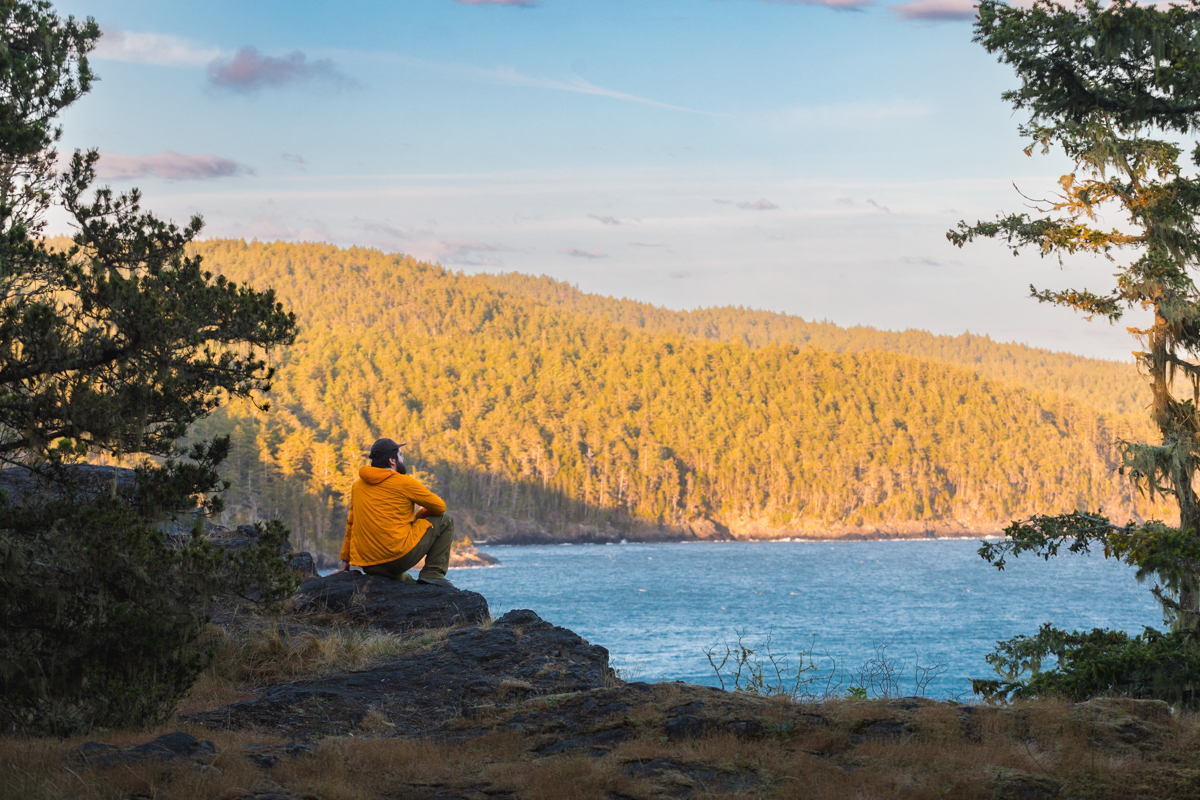
How to get the East Sooke Coast Trailhead
While there are a number of different ways to hike parts of, or all of the East Sooke Coast Trail, I’ll be providing directions on hiking from West to East, starting at the Aylard Farm Parking Lot. This is also the most popular section of East Sooke Regional Park, so unless you’re starting your hike at a very unusual time you can expect to see other people at the beginning of your hike at least.
The parking lot is 45 minutes from downtown Victoria. Start by driving West out of Victoria, via the Highway 1. Pass Langford, and turn left onto West Shore Parkway at the stoplight just before the Malahat. Continue straight through two roundabouts, then take the first exit on the third roundabout to stay on West Shore Parkway. After a few minutes, you’ll reach Highway 14 Turn right here, following signage for Sooke. After about 8.7 km, take the exit on the right to get onto Gillespie Road. Follow it for 6.4 km. Once you reach the T intersection with East Sooke Road, turn left. After another 2 km, turn right onto Becher Bay Road. Continue down the road until you reach the large well-signed parking lot at its end.
Click here to open the exact trailhead location in Google Maps.
My Hike on the East Sooke Coastal Trail

Setting off from the Aylard Parking lot. When I visited it was full of cars.

It’s possible to continue straight here instead of turning left, although you’d miss the first kilometer of the Coast Trail. A lot of people do in fact skip it, but they’re missing out on a really nice viewpoint at the start of the hike.

The first glimpses of ocean appear through the trees. this short section would make a great little 1.5 km loop all by itself.

Campbell Cove and Becher Bay Marina.

Finally views to the south expose themselves. I hope you like looking at the Olympics, because you get amazing views of the distant mountain range all throughout the East Sooke Coast Trail. At this bench the path forks – the path to the right is hidden behind the grasses here. I suggest taking the detour to check out Creyke Point, which id the path on the left, before backtracking and continuing up the coast. It only takes a few minutes.

Getting up to the exposed rocky overlook at Creyke Point the trail is a little bit rough, but so is much of the rest of the trail so get used to it.

I’m higher up than I appear here. Looking towards the CFAD Rocky Bay Munitions Depot, which is just on the other side of those hills. It’s easy to imagine that all of Victoria once looked a little like this.

Continuing back up the coast trail. Here’s the other half of the fork I failed to photograph earlier. Look at the East Sooke Coast jutting out to the left. That’s where we’re going (and then some).

And here is where if I’d gone straight from the parking lot I would’ve ended up. Because this the popular Aylard Farm area I think there are a couple of other intersections. Of course for the entirety of this hike I’m stocking along the coast so it’s always very easy to know what to do at prettymuch every intersection: keep left.

This small pocket beach was surprisingly sandy, and unsurprisingly popular. Worth a brief stop for sure, but I was excited for the solitude later on the hike.

The first appearance of the little orange trail markers that will save your life. I haven’t photographed every single place where the trail isn’t super clear, but fortunately in almost every case it is at least well marked as long as you follow the trail markers. At around this point the obvious manicured path that the trail started off as becomes a but more windy and overgrown.

This sign marks the Alldridge Point petroglyphs, which are on the rocks seen directly behind me in this photo. Be careful approaching them at high tide.
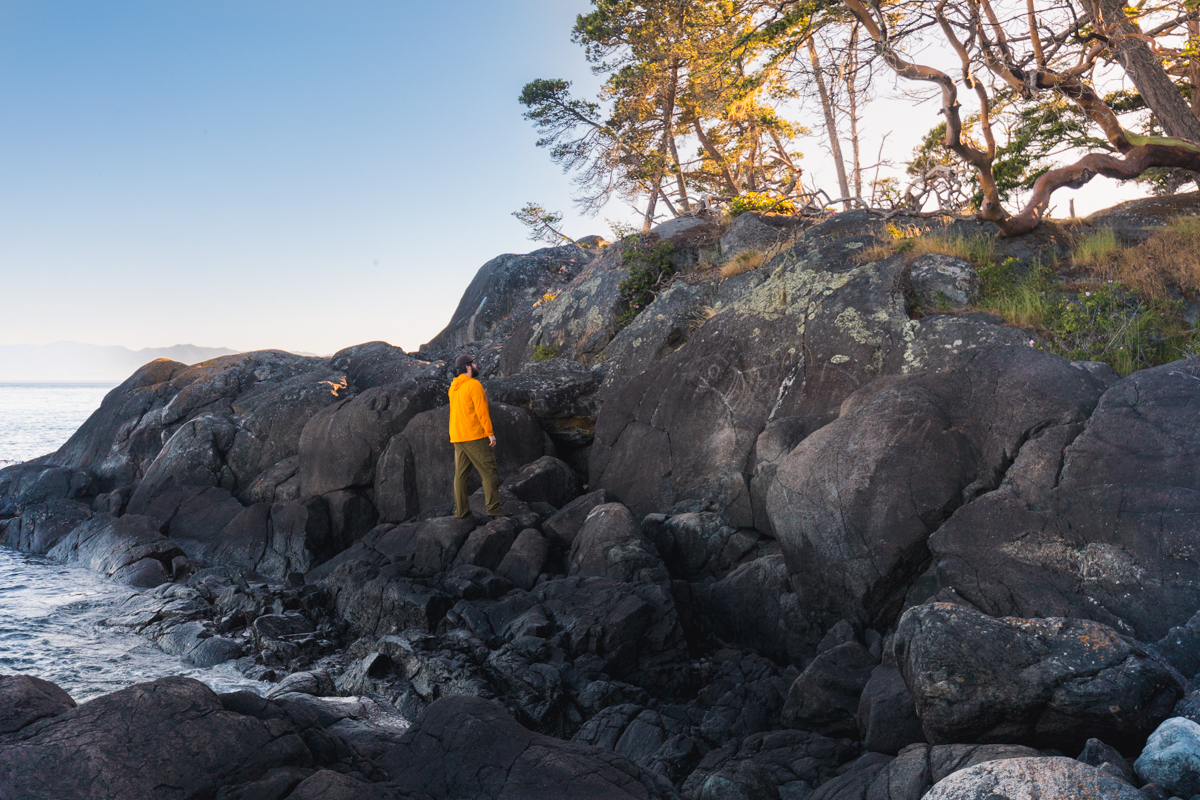
It’s illegal to touch the petroglyphs, but of course that hasn’t stopped certain teenagers from adding their initials. Don’t be a dick. While there used to be other figures visible, now only an elephant seal is really visible. Eventually it too will be eroded away and lost.

The coast, which up to this point has been headed almost directly south, takes a brief moment to head east before turning south again. This provides an opportunity to look ahead and see the next landmark of the hike, and possibly my favourite viewpoint of the whole thing: Beechey Head.

Note all the orange trail markers. Beechey Head in the distance.

A short that had to be downclimbed. There are tons and tons of little scrambling sections throughout the hike, and I’ve photographed very few of them. expect the East Sooke Coast Trail to test your balance and agility, as from this point on the trail only gets increasingly rough.

Another example of a section of “trail”. There’s a decent amount of uphill here to get up to the to of Beechey Head.

A four-way crossroads here. Turn left to take the short uphill detour to the top of Beechey Head (a cannot miss), turn right to follow an old logging road back to the Aylard Farm parking lot, or continue straight to follow the East Sooke Coast Trail further. Reaching this point marks just over a quarter of the way through the hike.

Scaling up to the top of Beechey Head. The small rock marker on the left marks turning point 10 of the Canadian and United States boundary between the 49th parallel and the Pacific Ocean. There’s a very nice view from there. There’s a much much nicer view though if you take a right where I am.

Looking along the East Sooke coastline and at the rest of the hike ahead of me. It’s really really difficult to make out, but directly under the sun it’s possible to see the tiny shape of Secretary Island, which marks the approximate endpoint of the hike. This is the perfect place to stop and take a snack before heading all the way back down to the water.

After backtracking to the four-way intersection and continuing straight, the trail loses elevation fast and reaches a small shelter. Another intersection here provides another easy way to make a shorter loop and head back to the Aylard Farm parking lot.
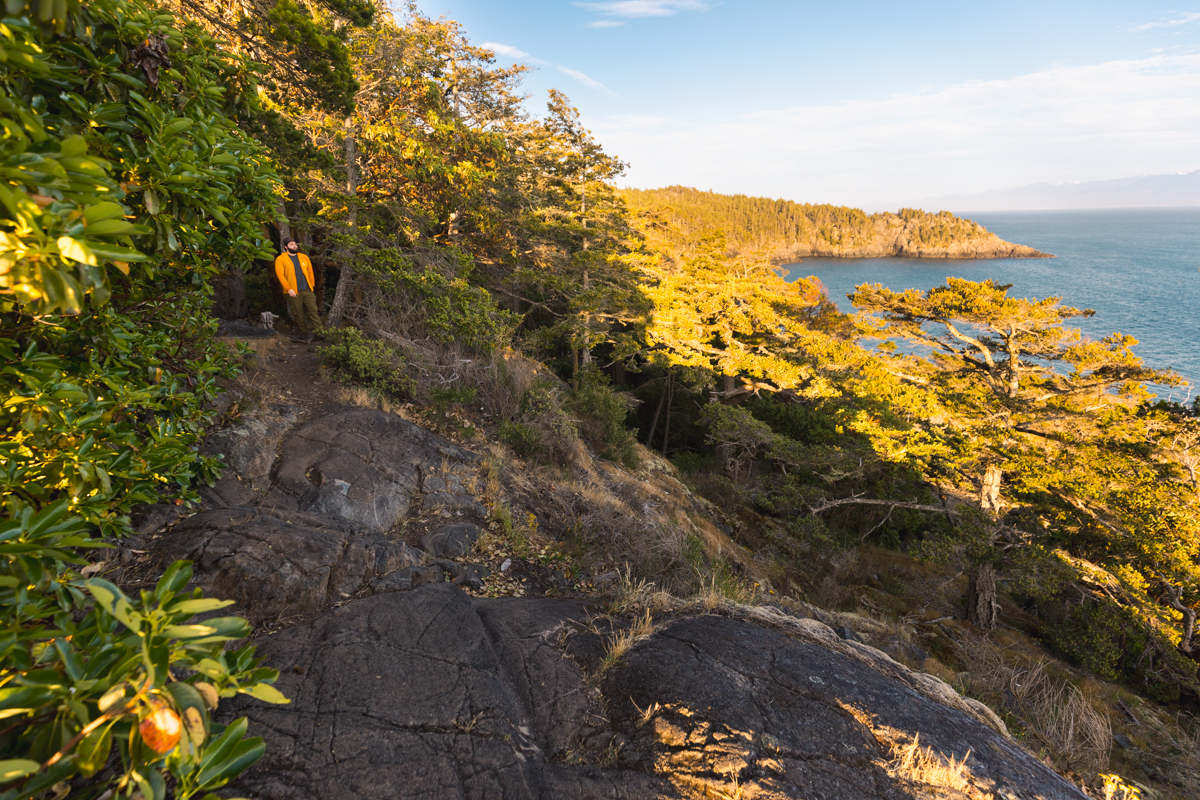
Note the rough and rocky quality of the trail. This is after another couple ups and downs, but the small bald area of the Beechey Head viewpoint is still visible in the distance behind me.

Some elevation lost, and by the water’s edge once again.

And some elevation gained. Note the v-shaped gash into the land where the water flows, and the cliffs get steep on either side. There’s probably close to about ten of these in succession along the hike, and they are the most annoying thing in the world, because you have to go all the way up, then all the way down. And repeat. Not much distance is gained, but a whole lot of frustrating elevation. Make sure to take time to enjoy the views from the high points.

Another intersection, just before one of the highlights of the east Sooke Trail. Keep left and follow some stairs down to the water’s edge.

I’m not sure this beach has a name, but it is lovely – it’s also found just before reaching Cabin Point, which is approximately at the halfway mark (ish).

The trail heads back up on the other side of the beach, and marches onwards towards Cabin Point.

The old trap shack which has been converted into a shelter.

While staying overnight on the East Sooke Trail isn’t allowed, it’s obvious that people do use the shelter for that purpose. I would of course never encourage such behaviour but if you decide to spend a night in the beautiful wilderness alone, for God’s sake don’t leave your trash lying around.

Heading uphill right after Cabin Point.

You can see the notable amount of elevation gain and horizontal detour taken to get around this section of ocean. Possibly worth it for the lovely views of Cabin Point from above.

Secretary Island is now clearly visible in the distance. The endpoint of that finger of land reaching out to it is the very end of the trail, and I’m now more than halfway there.

Heading uphill. On the left is where eventually I will come back down. This section of trail between the halfway point and the three quarters mark is probably the most rugged, and where signs of human presence are most absent. It’s really really nice.

You know you’re approaching the end once you start seeing small bridges and signs marking intersections again.

Secretary Island getting bigger.

I felt that I should include some more photos of the types of short scrambling sections that are a constant presence throughout the trail.

Civilization! Just like how a lot of people skip the first viewpoint of the hike at Creyke Point, it’s also common for people to skip the last viewpoint. I think it would be a shame to not hike the Coast Trail from very end to very end, especially when the last viewpoint is as good as it is, but to each their own. If you turn right here at the pit toilet you’ll find yourself on a logging road that leads to the Pike Road trailhead. Or turn left to go down to Anderson Cove and continue on the extra ten or so minutes to the final viewpoint of the hike.

Anderson Cove is really nice. The final viewpoint is visible in the distance.
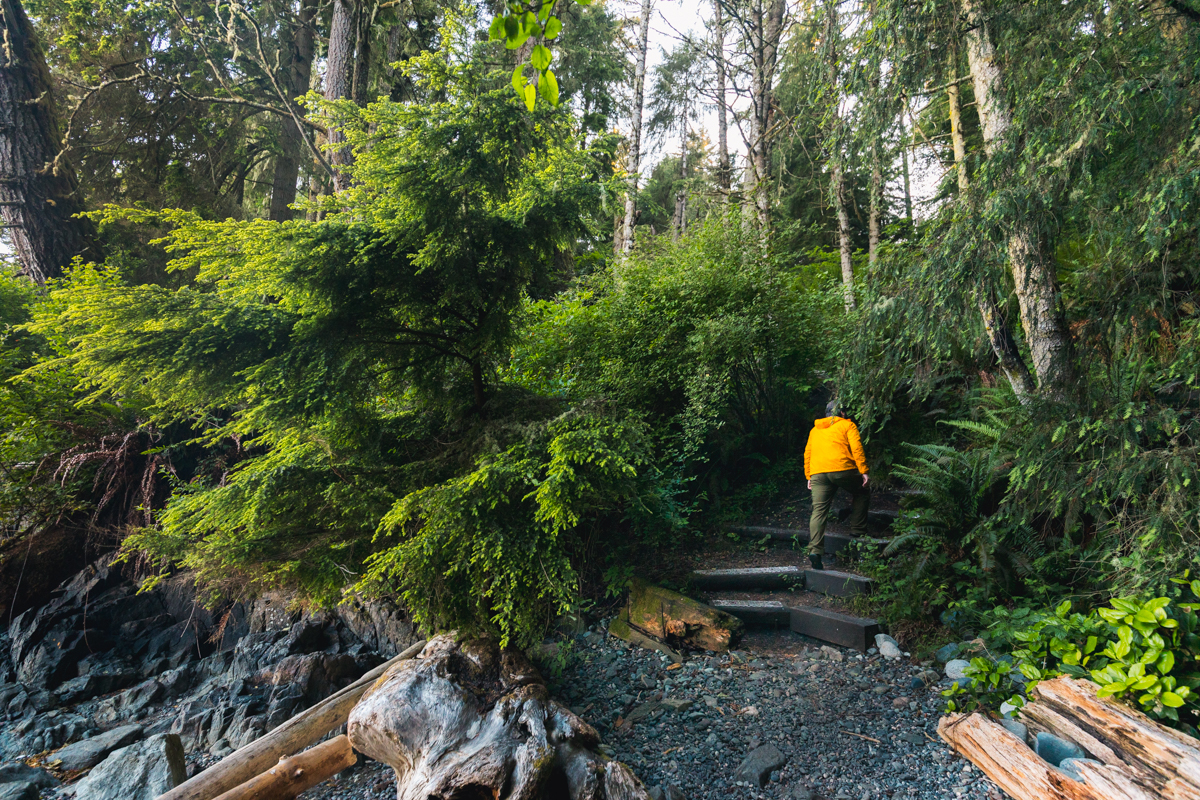
Heading up the stairs on the other end of Anderson Cove. Just past the top of these stairs is an important intersection I seem to have forgotten to photograph. Keep right to connect back on to the logging road leading to the Pike Road parking lot, or turn left to follow along the coastline to reach the final viewpoint. Once you’ve finished your hike you can backtrack to this intersection to make your exit at the Pike Road parking lot.

Heading up towards the final viewpoint at the end of this finger of land reaching out further than all the rest.

Its prominence provides a fantastic view of the East Sooke coast all the way back to Beechey Head.

Can you believe some people miss this view? It’s quite a feeling to look back on all the way you’ve walked.

There’s also a great view of Secretary Island to the south of here.
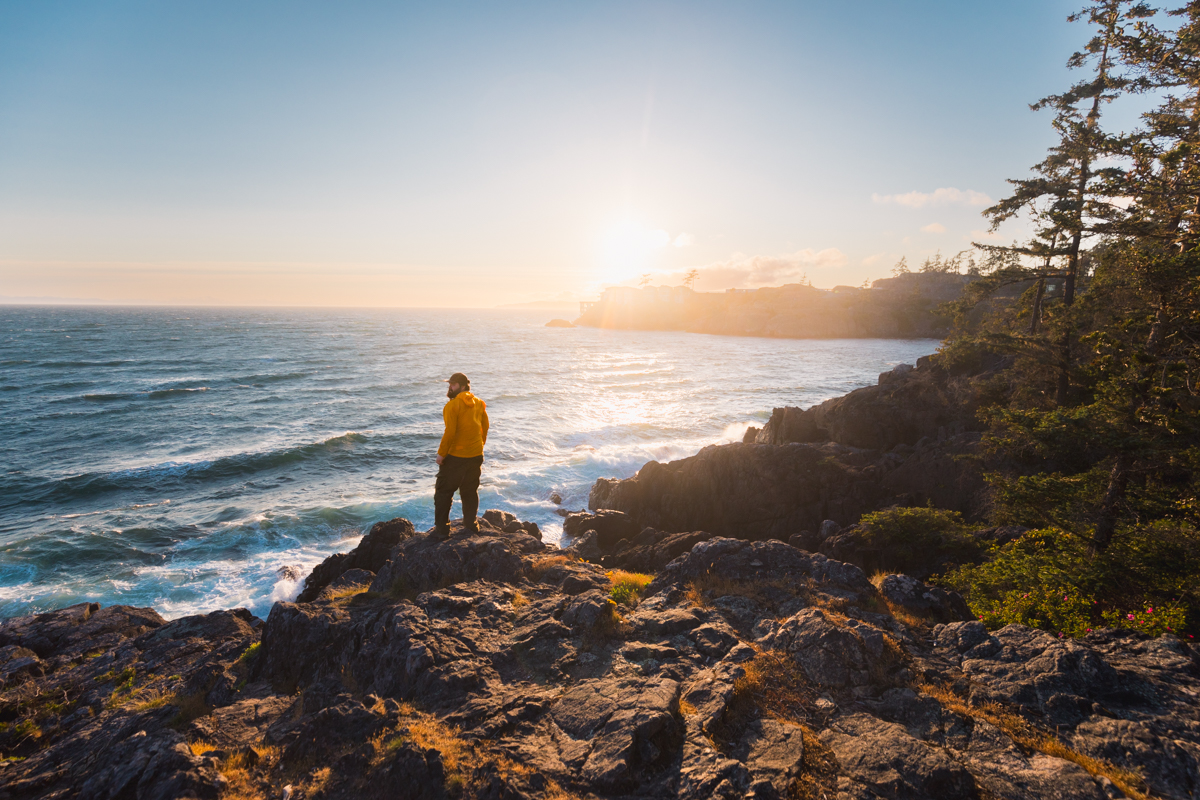
If you follow a social trail to the other end of the promontory, you’ll reach a nice viewpoint looking to the west. There isn’t too much to see in this direction but at sunset it is quite nice,
Recommended Hiking Gear



Water is a must whenever I’m hiking, especially if the sun is going to be out. My favourite water filter I’ve used is the Katadyn BeFree 0.6L, which unlike other water filters I’ve used packs up really small and lightweight. For hikes where I know there won’t be any readily available water sources along the way, I make sure to bring my own. The Hydrapak Stow 1L bottle is my go-to, for the same reason that it’s made of a soft plastic that folds up and doesn’t take up any more extra space than necessary in my pack. Finally, Aquatabs are another great option for purifying water, with one tablet being suitable for one litre of water. I previously used the Grayl water filter while travelling internationally, and though I found its hard body more convenient for day to day use and easier to drink from, it has a little too much bulk for my fast-and-light style of hiking.



The secret to all my photos of gorgeous sunset and sunrise mountaintop views? A lot of hiking in the dark. And let me speak from personal experience when I say that the last thing that you want to happen when hiking is to be caught in the dark without a headlamp. I used the Black Diamond Spot 400 for years and it worked great – until I lost it on top of a mountain somewhere. The only downside to it was having to worry about the batteries dying, though there’s also a slightly more expensive version that has a rechargeable battery. Nowadays I’m using the Petzl Actik Core, which is a bit pricier than the more budget-friendly Black Diamond, but is also brighter, more comfortable (in my opinion), and has a hybrid power system that is rechargeable but can also take AAA batteries if needed.
You won’t see me using trekking poles on shorter hikes often – but on long hikes and backpacking trips, as well as certain scrambles, they are an absolute lifesaver. I’ve invested in a high quality ultra-lightweight pair of MSR DynaLock Ascent carbon poles which, while pricey, I don’t regret one bit. If you’re not entirely sure how much use you’re going to get out of a pair of trekking poles, the best budget-friendly option would be the Trekology Trek Z 2.0. Amazon does sell a lot of cheaper Made in China-style trekking poles for cheaper, but these usually are much much heavier and not worth buying.
All the best and most long-lasting cables and power banks I’ve ever owned have been Anker. I once had a phone cable from them that lasted me over three years of daily use! That’s why I keep an Anker PowerCore Essential 20K power bank on me. Like many people I use my phone for a lot of stuff when hiking (checking in with family, using online maps, taking photos, flying my drone) so I like to be prepared for that low battery warning by having a backup power source on me just in case.


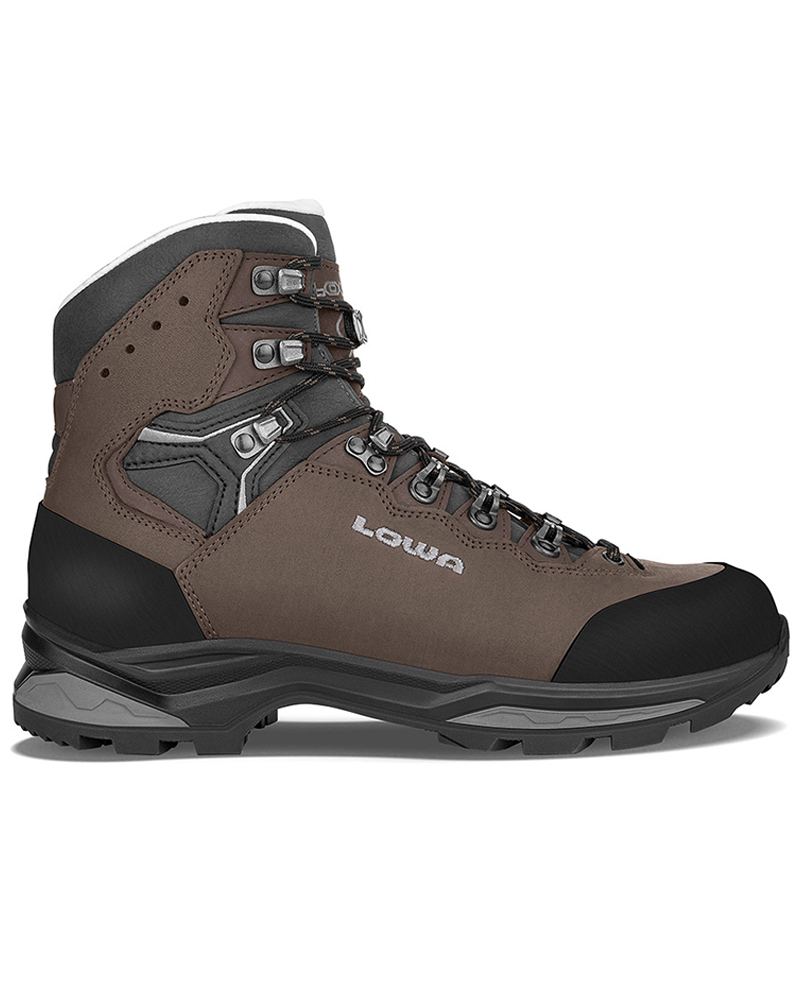
The only socks I ever buy for myself are from Darn Tough, and I almost always make sure to wear them when hiking. After years of having no problems only wearing these comfortable and rugged socks for hikes, I accidentally wore a pair of no-name socks on a hike last year and ended up with blisters on both feet. Safe to say I’m back to sticking with the Darn Tough. And the best part? They have a lifetime guarantee, meaning that if they ever wear out you can send them back for a brand new pair. For hiking footwear I go between a pair of lightweight approach shoes for quick and dirty mountain ascents or anything involving scrambling and more heavy-duty boots for longer treks. I’ve worn a couple different versions of the lightweight but super durable Arc’teryx Konseal FL 2 approach shoes for a few years now and am very impressed with the durability. I also really like the thick toecap that keeps me protected every time I stumble into a root or large rock. For longer, tougher, or muddier treks I rely on my LOWA Camino EVO GTX, which I find insanely comfortable and made of very high quality.



I wear my Ar’teryx Gamma Lightweight Pants on every single hike I go on, and on many days when I’m not hiking. After several years of abuse they are still holding together extraordinarily well, with only a few small holes from where I’ve fallen down and some slight stains from being repeatedly coated with mud. They’re lightweight, breathable, and super comfortable. For lightweight and breathable hiking tops I’m a big fan of both the Patagonia Capilene Shirt and the MEC Core Shirt. My Arc’teryx Squamish Hoody shows up in a lot of my photos. It’s super lightweight and packable, and does a great job of cutting the wind while also being pretty breathable. I also have an Arc’teryx Atom Hoody and Arc’teryx Beta LT that I pull out for cooler or wetter conditions.
I hope you enjoyed this guide to hiking the East Sooke Coast Trail! Feel free to leave any questions in the comment section below or to contact me directly via social media.
